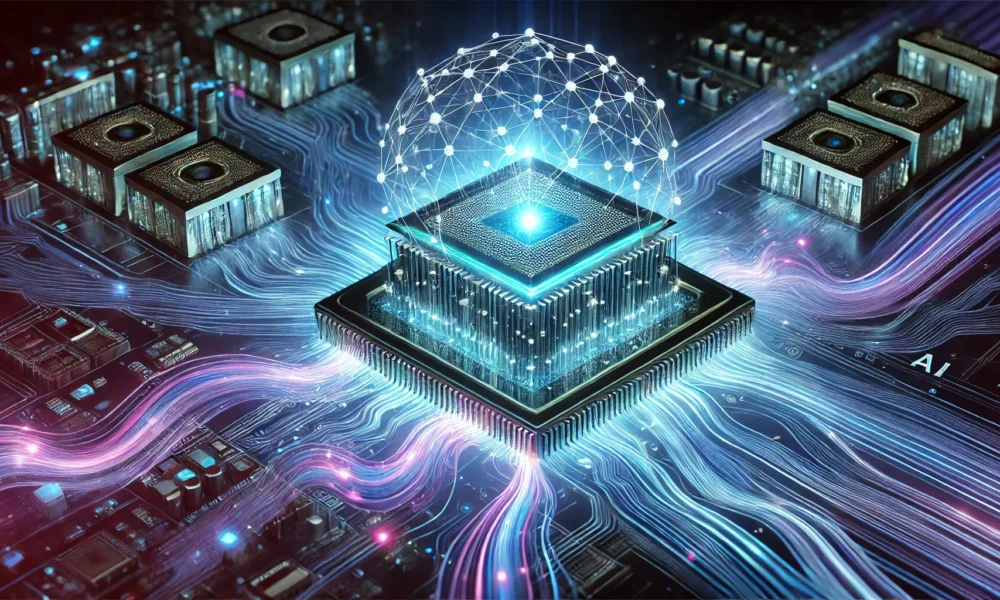QpiAI Secures $32 Million Funding to Advance Quantum Computing and AI Integration
QpiAI, an innovative Indian startup, has successfully raised $32 million in a new funding round co-led by the Indian government. This funding aims to expand the company’s global footprint while developing large-scale quantum computers for a variety of markets.
Strategic Partnership with the Indian Government
The Indian government’s $750 million National Quantum Mission played a crucial role in co-leading QpiAI’s all-equity Series A round alongside Avataar Ventures, setting the company’s post-money valuation at $162 million.
India’s Ambitious Quantum Computing Initiative
The funding marks a pivotal moment in India’s goal to emerge as a leading player in quantum computing. The National Quantum Mission, launched in 2023, recognizes quantum computing as both an economic opportunity and a matter of national security. Over the next eight years, the initiative aims to develop intermediate-scale quantum computers featuring 50-1,000 physical qubits, along with advancements in satellite-based quantum communications and multi-node quantum networks.
QpiAI: A Trailblazer in Quantum Technology
QpiAI is one of eight pioneering startups selected by the National Quantum Mission, each receiving initial grants of up to $3.5 million. Based in Bengaluru with subsidiaries in the U.S. and Finland, QpiAI proudly boasts the creation of India’s first full-stack quantum computer, the QpiAI-Indus, launched in April with 25 superconducting qubits.
Innovative Solutions for Diverse Industries
Established in 2019, QpiAI aims to merge quantum computing with AI to enhance optimization across various sectors, including manufacturing, finance, pharmaceuticals, and logistics. The startup has developed specialized software and proprietary hardware designed for real-world applications in materials science and drug discovery.
The Power of Quantum and AI: Eyeing Future Opportunities
According to QpiAI’s founder and CEO, Nagendra Nagaraja, “Quantum can enhance the robustness of AI.” The startup identifies simulation, drug synthesis, and material discovery as key areas where the intersection of AI and quantum technology can provide a significant competitive advantage.
Future Developments and Market Expansion Plans
QpiAI plans to unveil its 64-qubit quantum computer in November, with customer availability projected for the second or third quarter of next year. Additionally, the company aims to start manufacturing quantum hardware locally by 2026, with 80% of its current machines assembled in-house.
Workforce and Financial Health
Currently employing a dedicated team of 100, which includes 25 PhDs from reputable international institutions, QpiAI services about 20 clients across India and the U.S., including government entities testing algorithms on its infrastructure. The company boasts profitability at the EBITDA level for the past three years, featuring gross margins of around 60%.
Plans for Growth and New Markets
With the recent funding boost, QpiAI is poised to expand into new markets like Singapore and the Middle East, while also focusing on local manufacturing and a goal to develop a 100-logical qubit system by 2030. In June of the previous year, the startup raised $6.5 million in a pre-Series A round at a valuation of approximately $30 million.
National Support for Quantum Innovation
The National Quantum Mission’s support extends to various innovative startups including QNu Labs, Dimira Technologies, and others, all contributing to a robust ecosystem aimed at positioning India as a global leader in quantum technologies. According to Ajai Chowdhry, chairman of the National Quantum Mission, “We plan to continue supporting home-grown companies like QpiAI to help them scale and innovate.”
Sure! Here are five FAQs related to India’s push for quantum computing and the role of QpiAI in this initiative:
FAQ 1: What is India’s global quantum computer push?
Answer: India’s global quantum computer push aims to establish itself as a leader in quantum technology through research, development, and collaboration. The initiative includes investments in infrastructure, talent development, and international partnerships to accelerate advancements in quantum computing.
FAQ 2: What is QpiAI?
Answer: QpiAI is a specialized platform designed to leverage quantum computing capabilities for various applications, including artificial intelligence, optimization, and complex problem-solving. It serves as a vehicle for realizing India’s quantum computing ambitions, providing tools and resources for researchers and enterprises.
FAQ 3: How does QpiAI contribute to quantum computing in India?
Answer: QpiAI contributes by offering a robust framework for developing quantum algorithms and applications. It facilitates collaboration between academia and industry, promotes knowledge sharing, and helps accelerate the commercialization of quantum technologies in India.
FAQ 4: What are the potential applications of quantum computing through QpiAI?
Answer: Potential applications of quantum computing through QpiAI include drug discovery, financial modeling, supply chain optimization, machine learning enhancements, and solving complex scientific problems. By harnessing quantum computation, these fields may experience significant breakthroughs.
FAQ 5: What is the significance of this initiative for India?
Answer: This initiative is significant for India as it positions the country as a key player in the global quantum race. It fosters innovation, attracts investment, and creates a skilled workforce, ultimately driving technological advancements and economic growth in the era of quantum computing.









